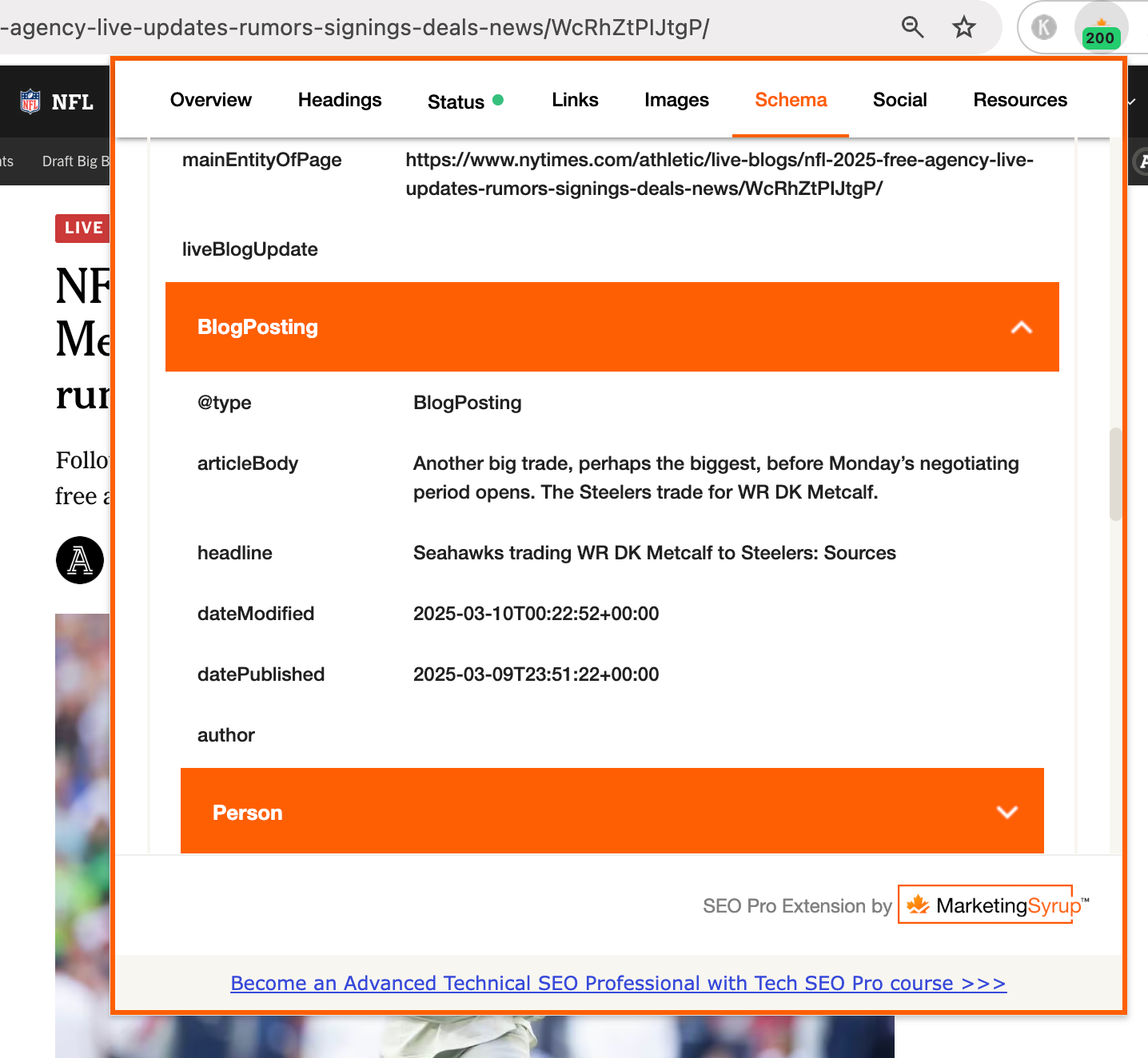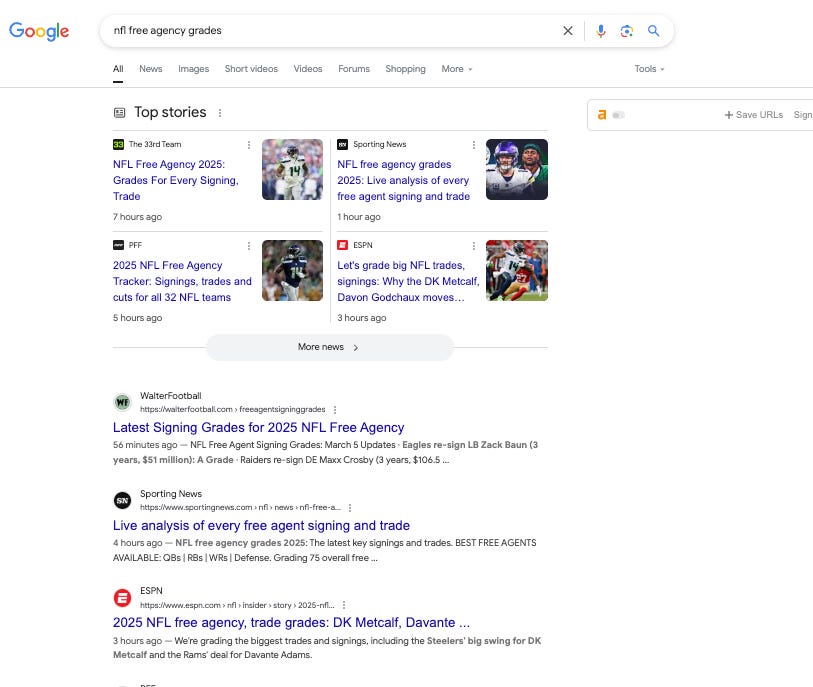How to best optimize the 5 headline fields
Each headline element can cater to a specific audience and platform, giving publishers a competitive advantage
#SPONSORED
SEO just got smarter. Now, you can insert links into relevant, high-traffic pages to drive immediate referral traffic and boost rankings.
✅ Traffic-Driven Link Insertions
✅ Effortless Guest Posting
✅ One-Click Placements
✅ No Content Creation Needed
🎁 Use promo code WTF for a $50 credit on signup.
Hello, and welcome back. Shelby here, back from a wonderful weekend full of family, fun and love. I went back to my hometown to celebrate my cousin’s fiancé’s beautiful bridal shower at a winery before hitting up the local Royal Canadian Legion for beers with my parents and their friends. There’s nothing more exhilarating than winning the Saturday draw for an LCBO gift card (the liquor store for our non-Ontario friends).
This week: Optimizing the 5 headline fields! Each headline element can cater to a specific audience and platform, giving publishers a competitive advantage. We explain and provide optimization tips for each headline field.
Join our community of news SEOs on Slack to chat any time.
Let’s get it.
In this issue:
What are the 5 headline fields?
Why is it important to optimize the
Considerations for each headline field
THE 101
What are the five headline fields?
Headlines are the most important text on an article. It's the reader's first introduction to a story, and in a volatile, competitive landscape, it could make or break the performance of an article on Google.
There are five major headline fields that can impact an article’s performance in Google’s ecosystem. These are:
The on-page visible headline;
The title tag;
The structured data headline;
The open graph title;
The internal link/homepage headline.
Experts have differing perspectives on naming conventions and how much influence each headline field has. That said, everyone agrees that publishers who optimize these effectively gain a competitive advantage.
Why is it important to optimize each of the five headlines?
Optimizing all of the headline fields ensures that you are catering to each referral channel that can drive traffic to your site — even outside of Google.
It helps key in on each platform and its unique audience. For example, Google Discover is more like a social platform where aspirational headlines with a curiosity gap perform better, whereas keyword-targeted headlines work better for organic search.
Not every content management system (CMS) has multiple headline fields. For many, it may only be possible to optimize one headline that affects all places a story can show up. That’s entirely okay — it’s not necessary to optimize all five, but it is definitely a benefit.
If you don’t have the capability, consider adding a step in your workflow. Is this a search story or better for Discover? Write the headline for the audience you think it is most likely to hit with.
🔗 Read more: The 5 headlines Google cares about by Barry Adams
THE HOW TO
How to optimize the five headline fields
There are specific tactics for each headline field, but always keep in mind your newsroom's best practices for SEO. Ultimately, headlines need to be engaging and drive readers to your site.
The on-page visible headline
What is it: The headline at the top of the page. It should be wrapped in a <h1> heading tag. This can be pulled into Google’s Top Stories box, even if it’s different from the title tag, and is often used for Google News, too.
Keys to optimizing: This is the main headline for your users and the first interaction with the story on-page. Focus on traditional headline best practices. Length should be between 65-76 characters and never more than 100. Include targeted keywords near the front of the headline. Add the year if it’s a recurring event each year (i.e., Oscars 2025). Avoid branded franchise names or author names. Add intrigue, like using “how” or “why”, which tend to do well in search.
The title tag
What is it: The headline that shows in the tab of a webpage, usually in a <title> tag. Often also called the “SEO title” because it was historically the main headline considered for ranking. Often the headline in organic search (aka the blue link) and usually in Top Stories. The title tag is the default for SEO, so it’s the one you should expect to see in search the most.
Keys to optimizing: Again, focus on headline best practices. The title tag cuts off in search results around 55-65 characters, so write headlines with targeted keywords as close to the front as possible. It’s also in the tab of the webpage on browsers, which can help readers guide through their (realistically, one thousand) tabs (not SEO, but a nice-to-consider).
The structured data headline
What is it: Title found in the `headline` attribute of the NewsArticle/Article/BlogPosting structured data markup on a page. It's not a requirement, but is increasingly a factor for ranking in Top Stories or features like AI Overviews.
Keys to optimizing: While there’s no character limit, it will cut off depending on the platform where it surfaces. Since this headline field is quite influential for Top Stories consideration, ensure it is engaging with the proper keywords early. For a live blog, each individual post has its own headline attribute in the schema, so you can inclusive those subheadings in the liveBlogUpdate markup.

The open graph title
What is it: Headline found in the `og:title` property in the Open Graph meta tags. Often used on Google Discover and social feeds like Facebook and Twitter (or X) for social card promotion, as these sites tend to be looking for more aspirational, clickbait headlines.
Keys to optimizing: Stay within the character limit of 50-75 characters, and never above 100. Focus less on keywords, but more on the curiosity gap. Be more feature-y, aspirational and “clickbaity,” but don’t write an inaccurate headliner. Use words that make a person stop scrolling and decide to spend time on your article.
The internal link/homepage headline
What is it: The headline displayed when an article is featured on the homepage, a section or linked for further reading. This is one way Google finds articles by crawling links. Googlebot crawls the link and uses the headline, which is also the anchor text, to gather clues to interpret the story’s contents. Internal linking is still so incredibly important to Google that it’s essential that this text is optimized.
How to optimize: Length depends on your site's design and layout. Shorter is definitely better here. Always think, “what is the most important information that will drive click-through?” Be direct and concise if it’s news; spark curiosity and engagement if it’s a feature or analysis. Ensure the text includes a key term to help with Google’s interpretation of topic relevance.

🔗 Read more: Top 5 news headlines every article should have and optimize by NewzDash
It's Google's world — we're just living in it
Sometimes, despite trying to cater to a specific platform, Google will choose the headline it thinks has the best potential in SERPs. In the example below, ESPN's article on the NFL free agency trade grades is featured twice — once in Top Stories and once as a blue link. The organic link uses the main <title> tag, but the headline used in the news box is actually the open graph title, not used in any other headline field. This is a great example of how Google will sometimes deviate entirely from its guidelines and choose a headline that it feels will drive the most engagement — so, make sure all headline fields are optimized.

The bottom line: Each headline field is an added benefit in a very complicated, saturated and competitive environment. If your CMS allows, consider having your tech team implement fields for these five headlines. If this is not a capability, just ensure you’re making the headline fields you do have as engaging and optimized as possible.
#SPONSORED - The Classifieds
Trisolute News Dashboard builds tools to help news publishers demystify the news SEO universe and increase Google visibility. Get a free demo and trial!

RECOMMENDED READING
Google news and updates
🤖 Google: Expanding AI Overviews and introducing AI Mode.
🤖 Matt Southern: Google updates robots meta tag document to include AI Mode.
🤖 Danny Goodwin: Google now sees more than 5 trillion searches per year.
Even more recommended reading
🌸 Ashley Liddell: Pinterest SEO: Your guide to brand discovery.
🔍 Jessie Low and Aleyda Solis: SEO for brand visibility and recognition.
🔥 Ryan Law: SEO is the worst it’s ever been (and it’s still your top marketing channel).
🤔 Rand Fishkin: New research shows how often Americans search Google and its top verticals used.
⛔ Matt Southern: Google warns against redirecting 404s to homepage.
📈 Matthew Mellinger: 5 reasons why you should count queries in Search Console.
🥧 Dan Popa: Google’s CTR stats and changes for Q4 2024.
🚨 Scott Purcell: The AI apocalypse for publishers isn’t coming — it’s already here.
What did you think of this week's newsletter?
(Click to leave feedback.)
Catch up: Last week’s newsletter
Have something you’d like us to discuss? Send us a note on Twitter (Jessie or Shelby) or to our email: seoforjournalism@gmail.com.
Written by Jessie Willms and Shelby Blackley










